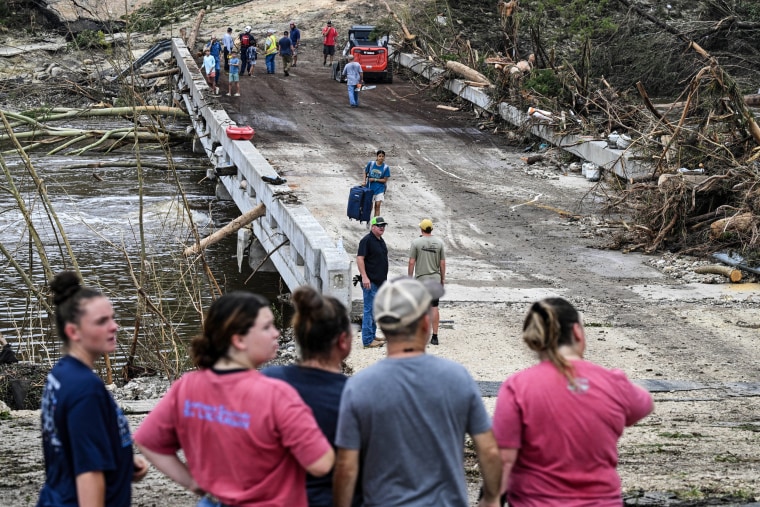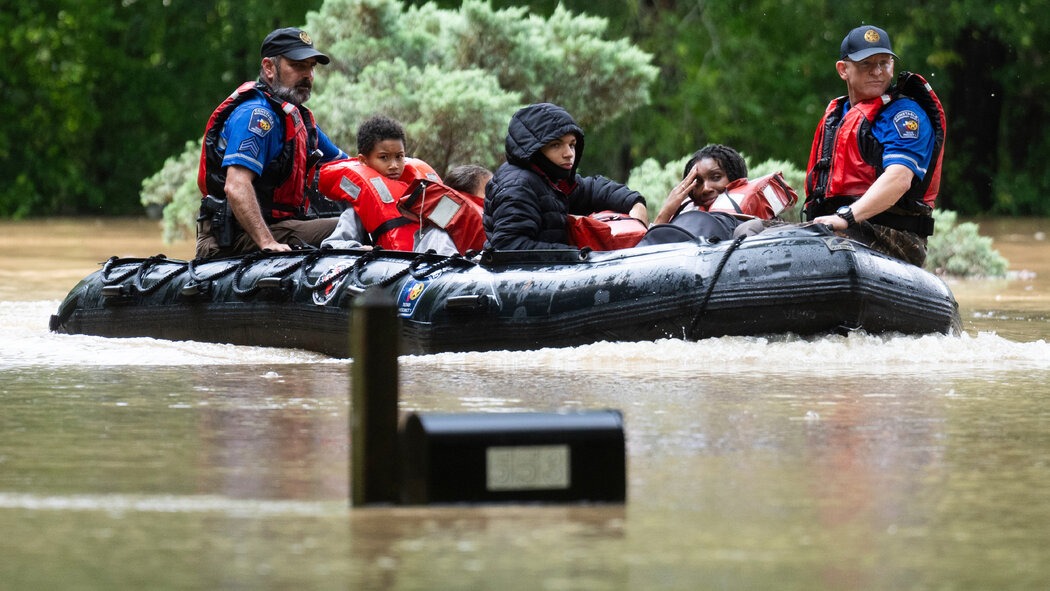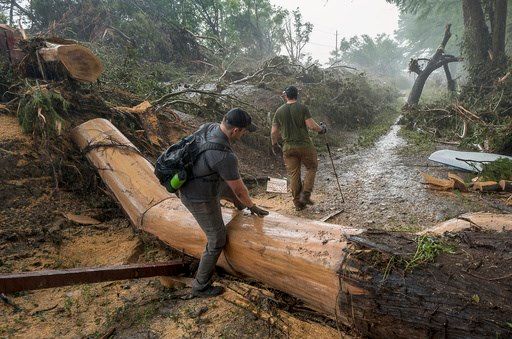Texas is facing a severe flood crisis that has claimed at least 51 lives, prompting a large-scale emergency response. Heavy rainfall led to flash flooding in multiple counties, causing rivers—including the Guadalupe River—to overflow their banks. Officials confirmed significant casualties, including fatalities at a summer camp in Kerr County, and ongoing search and rescue operations continue as authorities prepare for more rain in the coming days.

Flash Flood Details
According to the National Weather Service (NWS), torrential rains in Central Texas triggered rapid rises in rivers and creeks on July 4. The Guadalupe River at some points rose to major flood stage, sweeping away structures, vehicles, and even entire cabins. The Texas Division of Emergency Management (TDEM) issued warnings throughout the region, urging residents to avoid flooded roadways and seek higher ground.
Flash flood warnings were in effect in more than 20 counties. The storm system produced intense rainfall rates, with some areas recording over 10 inches of rain in less than 24 hours. The rapid onset of flooding meant many residents had limited time to evacuate.

Impact on Summer Camps
One of the most tragic aspects of the disaster occurred at a girls’ summer camp near Hunt in Kerr County. Local officials confirmed multiple fatalities among campers and staff when flash floods struck in the early morning hours. Emergency crews reported that floodwaters surged through cabins while most people were asleep, making evacuation difficult.
Camp directors and staff reportedly attempted to rescue children during the flood. Authorities and first responders worked tirelessly to locate and recover missing individuals in the hours following the disaster. Media outlets, citing local officials, reported that the camp sustained catastrophic damage, including washed-away buildings and debris entangled in surrounding vegetation.

Statewide Death Toll and Injuries
As of July 6, the Texas Department of Public Safety (DPS) confirmed that at least 51 people had died statewide as a result of the flooding. Fatalities were recorded in multiple counties, including Kerr, Travis, Kendall, Burnet, and Tom Green counties.
In addition to the deaths, at least eight people were reported injured, and over 850 individuals had been rescued by emergency services. The flooding displaced hundreds of families, with temporary shelters set up by local governments and the American Red Cross to provide food, bedding, and other necessities.

Emergency Response and Resources
Governor Greg Abbott issued a disaster declaration for 21 counties in response to the flood emergency. This declaration mobilized state resources and streamlined access to federal aid if needed. More than 1,000 state responders have been deployed, including members of the Texas National Guard, Texas Task Force 1, and local fire departments and EMS teams.
Helicopters and high-water vehicles were used to conduct rescues and transport survivors to safety. The U.S. Coast Guard also provided fixed-wing aircraft to assist in search and recovery efforts along affected rivers and flood plains.
Search-and-rescue operations remain ongoing, with authorities warning that the focus may soon shift to recovery as chances of finding additional survivors diminish. The Federal Emergency Management Agency (FEMA) has been in communication with state officials to assess needs and coordinate potential support.

Weather Outlook and Continued Risk
Meteorologists warn that the threat is not over. The National Oceanic and Atmospheric Administration (NOAA) has forecast additional rain in the coming days across Central and South Texas, particularly in the corridor from San Antonio to Waco. This increases the risk of renewed flash flooding and complicates recovery and cleanup efforts.
Residents are urged to stay alert to local weather alerts, heed evacuation orders if issued, and avoid driving through flooded roadways, a leading cause of flood-related fatalities.

Community Impact and Recovery
Communities across Texas are grappling with the aftermath of the disaster. Local churches, nonprofits, and civic groups have organized relief efforts to help those who lost homes or belongings. The American Red Cross and other organizations are providing shelter, meals, and mental health support to survivors and families who lost loved ones.
Cleanup efforts are also underway, with debris removal crews working to clear roads and restore access to rural communities. Public health officials have issued advisories about avoiding contaminated floodwater and being cautious of hazards such as downed power lines, unstable structures, and displaced wildlife.

State and Federal Coordination
Governor Abbott has emphasized the importance of coordinated response among local, state, and federal agencies. The Texas Division of Emergency Management is leading the statewide effort, while local governments manage shelters and logistics on the ground. Coordination with FEMA ensures that Texas can request additional resources if necessary.
President Joe Biden issued a statement offering condolences to the families of the victims and pledging federal support to Texas during recovery efforts. Federal agencies remain in contact with Texas leaders to monitor the situation and respond as needed.
Safety Guidance for Residents
Authorities have urged all Texans in flood-prone areas to:
-
Monitor local emergency alerts via radio, TV, or official apps.
-
Avoid crossing flooded roads, even if water appears shallow.
-
Move immediately to higher ground if a flood warning is issued.
-
Prepare emergency kits with essential supplies in case of evacuation.
-
Assist neighbors and check on vulnerable family members or friends.
Outlook for Recovery
While emergency response continues, Texas faces a long-term recovery effort. Rebuilding damaged infrastructure, repairing homes, and helping families recover will require significant resources and time. Officials have emphasized the importance of community resilience and cooperation in the weeks and months ahead.
Aid organizations continue to accept donations to support families affected by the flooding. Volunteers are being coordinated through local emergency management offices to help with cleanup and relief efforts.
Disclaimer
This article is intended for informational purposes only. All efforts have been made to ensure accuracy and reliance on reputable sources at the time of writing. However, weather conditions and emergency responses can evolve rapidly. Readers are encouraged to consult official sources for the most up-to-date information. This content does not constitute professional advice or an endorsement of any government position.
Sources
-
National Weather Service (weather.gov)
-
Texas Division of Emergency Management (tdem.texas.gov)
-
Texas Department of Public Safety (dps.texas.gov)
-
National Oceanic and Atmospheric Administration (noaa.gov)
-
Governor of Texas Official Website (gov.texas.gov)
-
Federal Emergency Management Agency (fema.gov)
-
American Red Cross (redcross.org)
-
U.S. Coast Guard (uscg.mil)
-
Local news coverage (Houston Chronicle, NBC News, ABC13, Fox 4)


